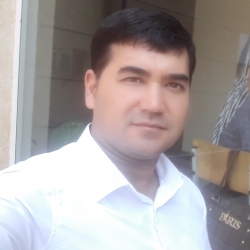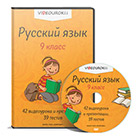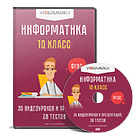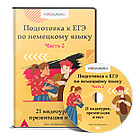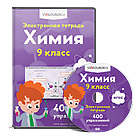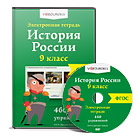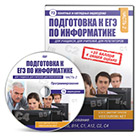Innovations in the teaching of instrumental performance and ensemble science in higher education and the use of advanced foreign experience.
Annotation: The performance of a musician who does not work on himself on a regular basis can end quickly. Because this activity is a creative activity. Creative activity requires constant research and regular practice of performance skills. Therefore, by itself, not only in the learning process, but also until the end of the executive activity, the importance of gamma, trinity, and exercise remains the same. If we look at the activities of famous musicians, we can clearly see proof of this.
In the article, the author provides a broad and clear understanding of the innovations in the teaching of instrumental performance and ensemble science in higher education and the use of advanced foreign experience.
Keywords: music pedagogy, instrumental performance, gamma, trinity, performance skills, creative activity, composer, mature musician.
Introduction. It is known that in the field of instrumental performance of music pedagogy, gamma, trinity and exercises are an integral part of the educational process. Learning and playing them is important at all stages of the learning process. It is used for different purposes at different stages.
The performance of a musician who does not work on himself on a regular basis can quickly end. Because this activity is a creative activity. Creative activity requires constant research and regular practice of performance skills. Therefore, by itself, not only in the learning process, but also until the end of the executive activity, the importance of gamma, trinity, and exercise remains the same. If we look at the activities of famous musicians, we can clearly see proof of this.
Composer and famous pianist S. Rakhmaninov, a mature musician of his time, once again proved the importance of rehearsals when he said:
The process of working on gammas and arpeggios should be not only the development of the student's technical abilities, but also one of the means of cultivating the skills of artistic expression of performance using these gammas.
We will now classify the gammas played in the Kashgar rubab based on the settings and capabilities of the Kashgar rubab.
We can divide them into 6 types:
1. Single-octave gammas played using an open string on a string;
2. Single-octave gammas played in different positions using open strings on two strings;
3. Single-octave gammas played using open strings on three strings;
4. Single-octave gammas played in one position on three strings;
5. Two-octave gammas with alternating positions on three strings;
6. Chromatic gammas;
1) Single-octave gammas played on an open string:
In the 1st net
Lya-major

Harmonic

Melodic

Mi minor

On the 3rd net
Si-major

Through these gammas, the student becomes acquainted with the different ways of locating sounds in positions and changing positions.
Re major

Re minor natural

It is known that chromatic passages are common in the works of composers. In the Kashgar rubab, the chromatic gammas are mainly dense, cohesive, characterized by the application of an appliqué that gradually increases or decreases. These gammas promote the rapid displacement of the fingers with each other and the accuracy of their curves. As can be seen, chromatic gammas can be played on all strings in the Kashgar rubab.
Gamma and exercises help in the early stages to learn light skills such as holding the rubab correctly and making a sound, mastering simple strokes, and moving the left hand along the handle.
In the later stages, it becomes an important tool in mastering the technique of sound production, complex passages and barcodes. Work on gammas and exercises should be based on the student’s preparation and the task at hand. When mastering any skill, it is best to learn to play the exercises slowly and then move on to a faster pace. For example, when working on a particular barcode, it is necessary to determine which gamma or exercise tool to use that barcode and what execution method to use, and then implement it.
Consequently, in mastering the speed of the fingers crossing the net and the skills of thematic jumping over large intervals, the triads and their rotations can be played at the same time at different strokes and at different speeds.
Any exercise or gamma should be clearly goal-oriented. Otherwise the student will not be able to achieve the desired result no matter how much he practices. In practice, such cases are very common. Therefore, the teacher must be able to clearly explain the purpose to the student. Some teachers, when working with students, often work only on the work or repeatedly repeat the later part of the work, but do not achieve the expected result. At this point, of course, it is necessary to determine the cause of the deficiencies. The use of goal-oriented exercises and gammas to overcome the deficiency gives good results.
Experienced teachers, as they analyze a new work, fully explain the work to the student from a theoretical point of view, set a clear task for the student and give the necessary instructions, explain the main aspects and determine what exercises to play. If the student is able to fully visualize the task assigned to him and the end result, he will be able to achieve his goal with the help of goal-oriented exercises in the process of independent work during the lesson.
It is very important to clearly explain to the student his mistakes in the lessons, to correct mistakes quickly. It has been found that the practice of playing exercises or gammas for two students at the same time for a certain period of time, or the student playing with the teacher at the same time, has a good effect on mastering any skill. Especially in the early stages of learning, a student cannot play any gamma or exercise independently for long periods of time. It lacks his patience and perseverance. If the above method is used, the student will be interested in the first, the ability to practice with maximum effort, and secondly, the teacher will be able to correct his mistakes immediately. By playing gamma and exercises at the same bar, dynamics or speeds, several students not only overcome the technical shortcomings of the student, but also develop his sense of rhythm, ensemble performance skills and hearing.
Conclusion. It should be noted that playing exercises, gamma, and trinities is only ordered by the teacher for the student and does not become a mandatory exercise for the student. The importance of this to the student should be constantly inculcated throughout the study period, in practical classes, so that the student understands the need for these classes.
It is well known that there are different holidays at certain times between study periods. Not all students practice the same independently on these holidays. After various similar breaks, the technical capabilities of any musician are somewhat reduced. If gamma, trinity, and exercise play become consciously necessary to the student, this will enable him or her to form and maintain a form of performance in the future. This is why the importance of gamma, trinity and exercise in executive activity is incomparable.
List of used literature.
A.Odilov. "History of performance in Uzbek folk instruments" T. "Teacher" 1995.
B.Мирзаахмедов, К. Usmonov, V.Tashxujaev. "Rubob's textbook." T., "Teacher" 1984.
K.Usmonov. "Primary rubab textbook". Publishing and Printing House named after G. Gulom, T ,. 2004.
N.Mironov. "Uzbek music". Uzbekistan State Publishing House. Samarkand. 1929.
R.Ibragimov. "Songs for Kashgar rubobi" (manuscript).
R.Qosimov. "Traditional Rubab Performance." T. "Uzbekistan". 1999.
S.Usmonov. "Songs of Rubob". T., The Teacher, 1983.
S.Xayitboev. "Songs for Kashgar rubobi". T., 1983.
F.Mamadaliev. Issues of national music performance. – T., 2001.
F.N.Vasilev. "Gamma and arpeggio application for Kashgar rubobi". «Teacher», T., 1978.
X.Nurmatov. "Rubob's textbook." Publishing and Printing House named after G. Gulom, T ,. 2003.
Sh.Shoraxmetov. "A set of exercises and melodies on the ways of status". Bilim Publishing House, T., 2005.




